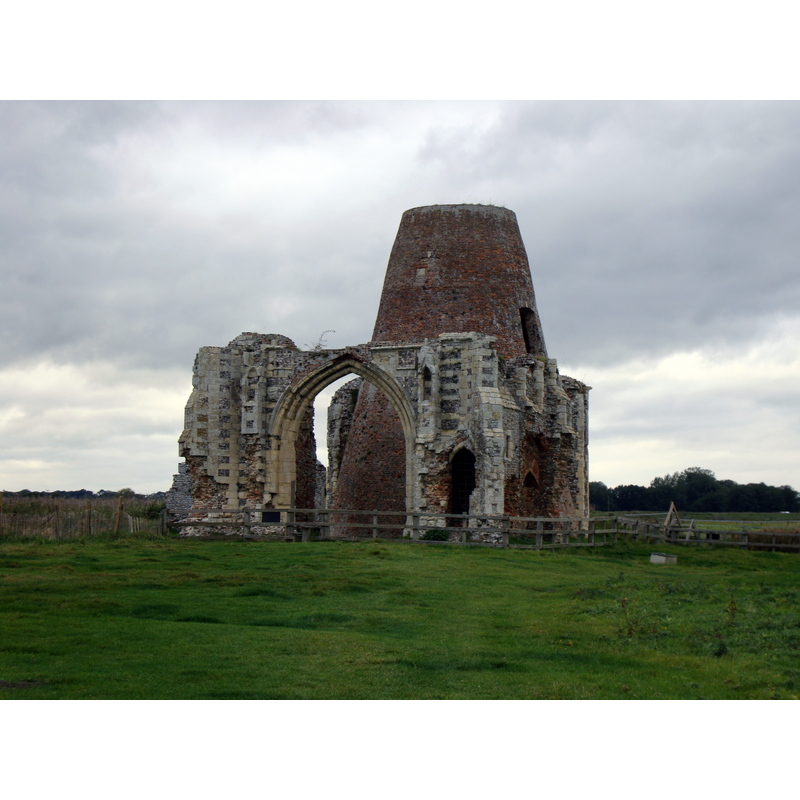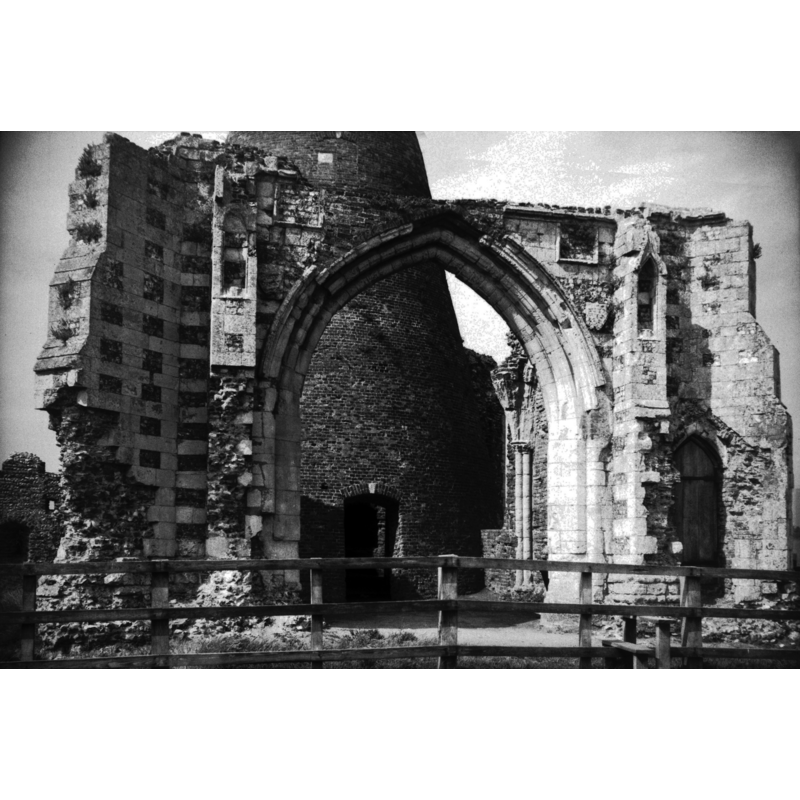Horning No. 1 / Holme / Horningham / Hulme

Image copyright © John Armagh, 2011
CC-BY-SA-3.0
Results: 2 records
view of church exterior
Scene Description: The ruins of the abbey gatehouse in August 1978 -- Photo caption: "An abbey of Benedictine monks founded here in 1020 by King Canute on a site previously occupied as early as the year 800 AD by a society of Saxon monks. In 1535, by virtue of a private Act of Parliament, the revenues of this abbey were exchanged for those of the old estates of the See of Norwich. The abbey was united to the Bishopric, and the bishops of Norwich became from that time, and still remain, Abbots of St Benet's-at-Holm"
Copyright Statement: Image copyright © George Plunkett, 2014
Image Source: B&W photograph taken 14 August 1978 by George Plunkett [www.georgeplunkett.co.uk/Norfolk/H/Horning St Benet's Abbey gatehouse E front [5951] 1978-08-14.jpg] [accessed 29 April 2014]
Copyright Instructions: Standing permission by Jonathan Plunkett
view of church exterior
Scene Description: The ruins of the abbey gatehouse in October 2011
Copyright Statement: Image copyright © John Armagh, 2011
Image Source: digital photograph taken 21 October 2011 by JohnArmagh [http://en.wikipedia.org/wiki/File:StBenetOfHolmAbbeyGatehouse.jpg] [accessed 29 April 2014]
Copyright Instructions: CC-BY-SA-3.0
INFORMATION
FontID: 19204HOR
Object Type: Baptismal Font1?
Church/Chapel: Abbey Church of St. Benet [in ruins]
Church Patron Saints: St. Benedict [aka Benet]
Church Location: Horning, Norfolk NR12 8NJ
Country Name: England
Location: Norfolk, East Anglia
Directions to Site: Located by the reiver Bure, in The Broads
Ecclesiastic Region: [Diocese of Norwich]
Historical Region: Hundred of Tunstede
Credit and Acknowledgements: We are grateful to Jonathan Plunkett for the photograph of the ruins of this church, taken by his father, George Plunkett, in August 1978
Font Notes:
Click to view
Blomefield (1805-1810) writes: "King Canute, the Dane, founded and endowed at Holm an abbey of Benedictine monks before 1020. [...] From an old manuscript in the college of Corpus Christi, Cambridge, wrote by William Botoner, alias Worceter, gentleman, who lived in the reign of Edward IV. and in the family of Sir John Falstolf at Castre in Norfolk, and was one of his executors; many curious accounts relating to this monastery, I have transcribed. The abbey church, from the east window, to the west door, together with the choir, was (as he expresses it) De gradibus meis, Anglice Steppys, 148.—The breadth of the choir and presbytery 17 gradus. The breadth of the south isle of this church, which was built by Sir John Fastolf, [...] 11 gradus, and the length of it from east to west, 58 gradus; this last appears to have been a beautiful pile, built of, and vaulted with, free-stone, and had 7 large windows to the south The length of the north isle was 68 gradus, the breadth 12 gradus. The length of the choir and stalls, 24 gradus. The length of the high altar was 17 of Botoner's spans, and that of the south isle, 5; the space of the bell tower that stood in the midst of the church was 22 feet." Reported as having falling into disrepair around the mid-16th century; now in ruins]. [cf. Index entry for Horning No.2 for the parish church].
COORDINATES
Church Latitude & Longitude Decimal: 52.6864, 1.5247
Church Latitude & Longitude DMS: 52° 41′ 11.04″ N, 1° 31′ 28.92″ E
UTM: 31U 400279 5838407
REFERENCES
Blomefield, Francis, An essay towards a topographical history of Norfolk, 1805-1810
Blomefield, Francis, An essay towards a topographical history of Norfolk, 1805-1810
